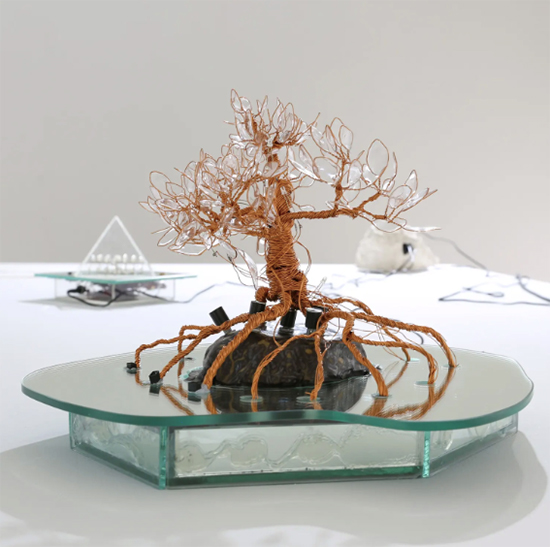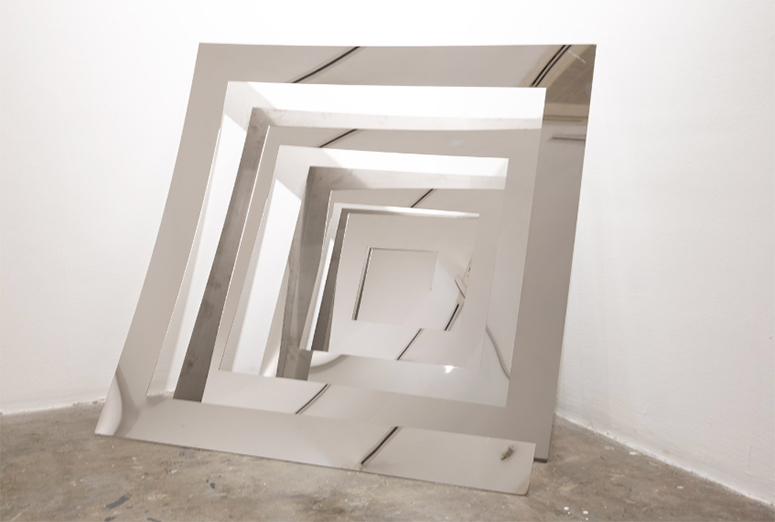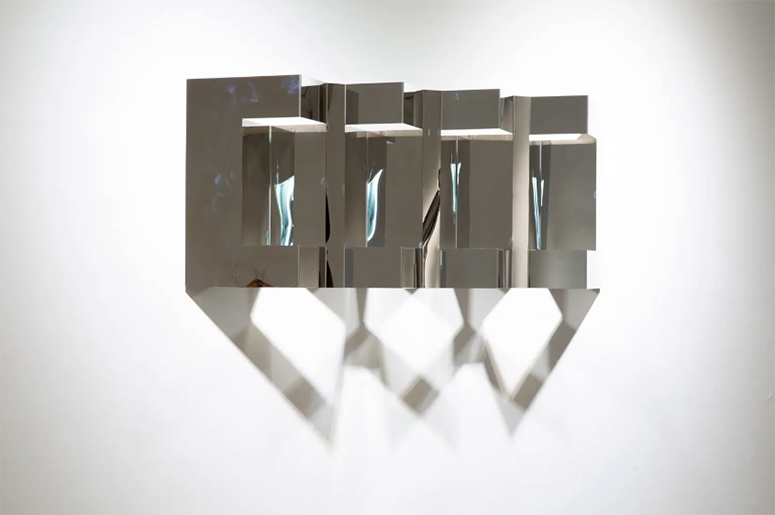'These Acts' makes art present
Explaining her curatorial process for the MO_Space exhibition These Acts, Eya Beldia cites the writer and researcher Eileen Legaspi-Ramirez: “Curation is about making art present.” The particular syntax of that statement offers a crucial framing to curation, how we can view curation as a method of production that platforms, elucidates, and interrogates artistic practice. For Legaspi-Ramirez, the critical task of curation must carefully look at an art object “in all its necessary problematics.” She asks in turn: “How might we take that challenge and look at the work of curation as not some merely ministerial window-dressing of sensual desire?“
What Beldia does through These Acts is explore the myriad ways curation can envision how art can look beyond and within the self; can move from an idea to an object and back to an idea. Grappling with diverse media such as steel works, sound, clay, and printmaking, Beldia ultimately sees curation as a way to “hold conversations through our actions.”

The exhibition is split into two acts, which Beldia envisions to be a complementary exchange between the inner and outer worlds of the artists. The first act assembles Micaela Benedicto’s geometric patterned steel mirrors, Gerecho Iniel Cruz’s circuitry of magnetic wires, Rhaz Oriente’s LED clouds, and Marco Rosario’s ceramic and porcelain figures. These works, though rangy in practice, all propose a manner of interaction with the audience. They ask us to draw close, examine from near and afar, look deeply, and sit with the world that each piece tries to build or make possible.

All the works presented in the first act showcase some form of technical ingenuity. Benedicto’s mirror steel works create a funhouse-style refraction of the self. Employing the replication of frames as a central motif, Benedicto asks how might we envision ourselves caught in strange and confusing angles, light catching our reflection in obtuse perspectives. Most alluring is the suspended formation of clouds Oriente orchestrates in her contribution, which makes use of glass, light, and AI-generated images to showcase the water cycle, from evaporation, condensation, to precipitation. It is a work that, in her own words, “captures the flow and movement of water.”

If the works in the first act move in startling directions, often leading viewers to stumble upon their own unique experiences, the pieces featured in the second act appear much more static. The works are comprised of different kinds of prints, from serigraphy and linocut to embroidery and rubber cut. But the way they are laid out, on a table and without any kind of framing, brings out a sparseness to the exhibition that isn’t present in the first act.

There’s a homeliness to the formatting of the second act that nearly de-emphasizes the dexterity and skill present in these works. From Eska Beldia’s wistful window serigraph to Kristen Cain’s orbs on kimono fabric aptly titled Swimming in Circles, the second act is full of quiet details that pursue close attentiveness and attunement to the nuances of each practice. Fara Manuel’s serigraphic and acrylic ink piece on mirror, titled “of inner mappings and neon lights,” is a tropical exploration of bright and commanding colors against a black backdrop.

I’m reminded going through this show about the curatorial impetus to manage an encompassing cohesion while also making space for each work’s unique punctum (focal point), or perhaps some spirit residing in it that cannot be reduced to any kind of theme or organizing principle. Framing each piece as a kind of “act,” the MO_Space exhibition reckons with the artist’s sense of community, how each act, in their own form of volition, can reside, thrillingly, within both a public and private resonance.
* * *
These Acts, curated by Eya Beldia, opened Sept. 14 at MO_Space, 3/F, Bonifacio High Street 5th Avenue, Taguig.



